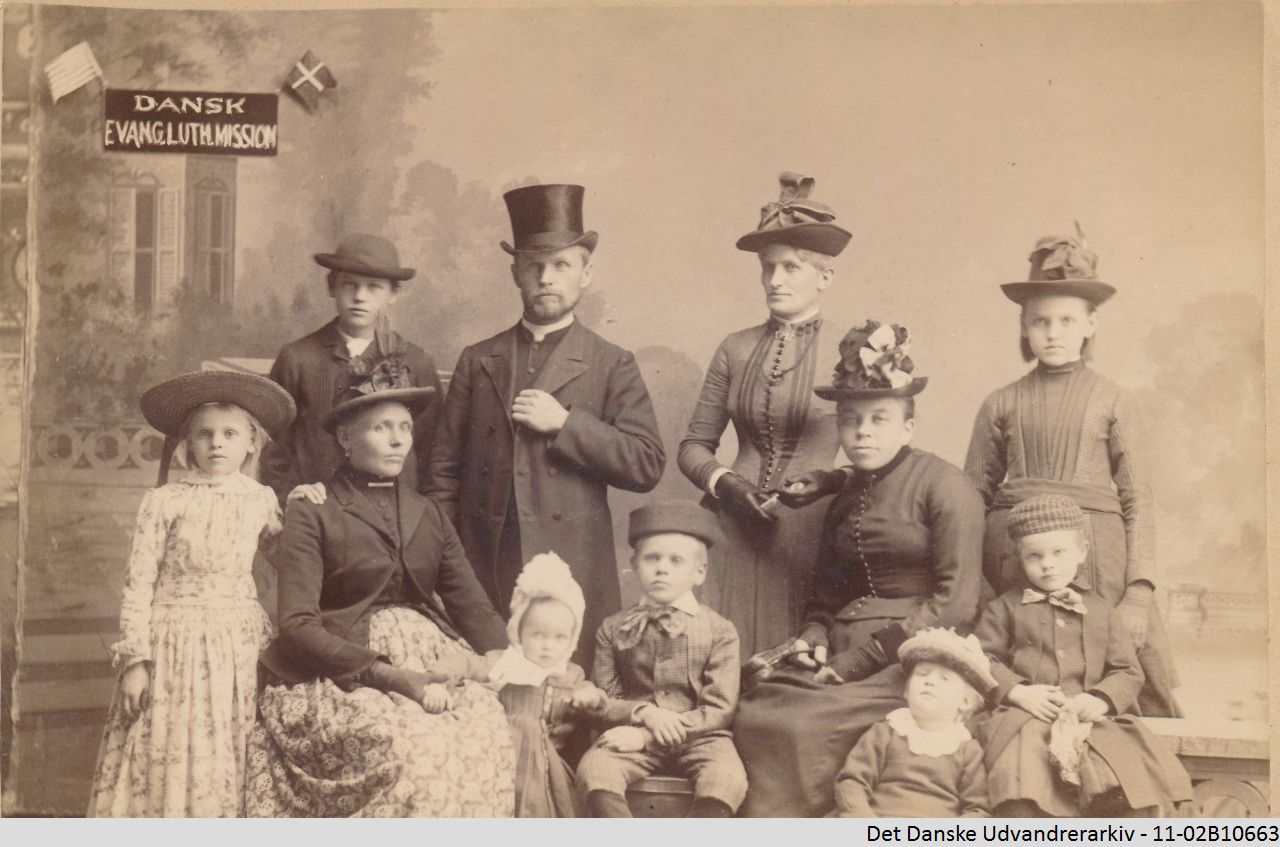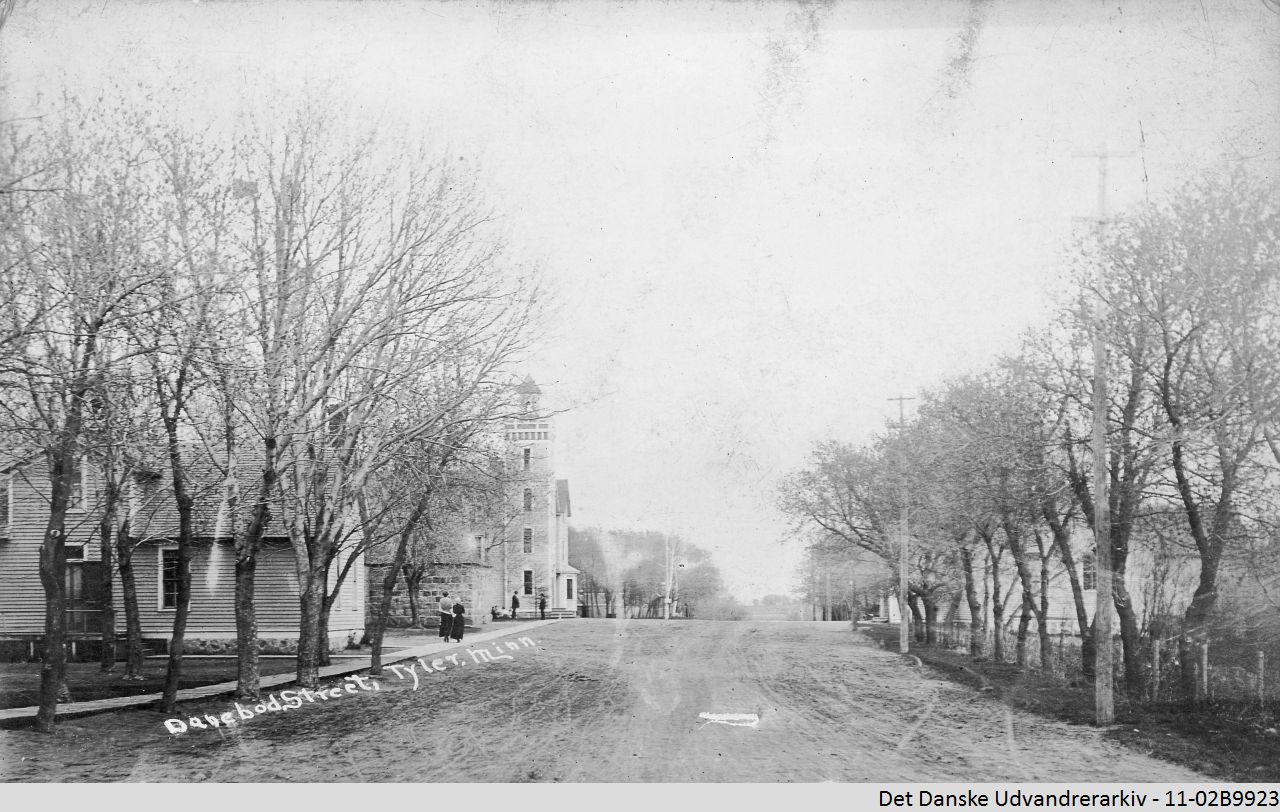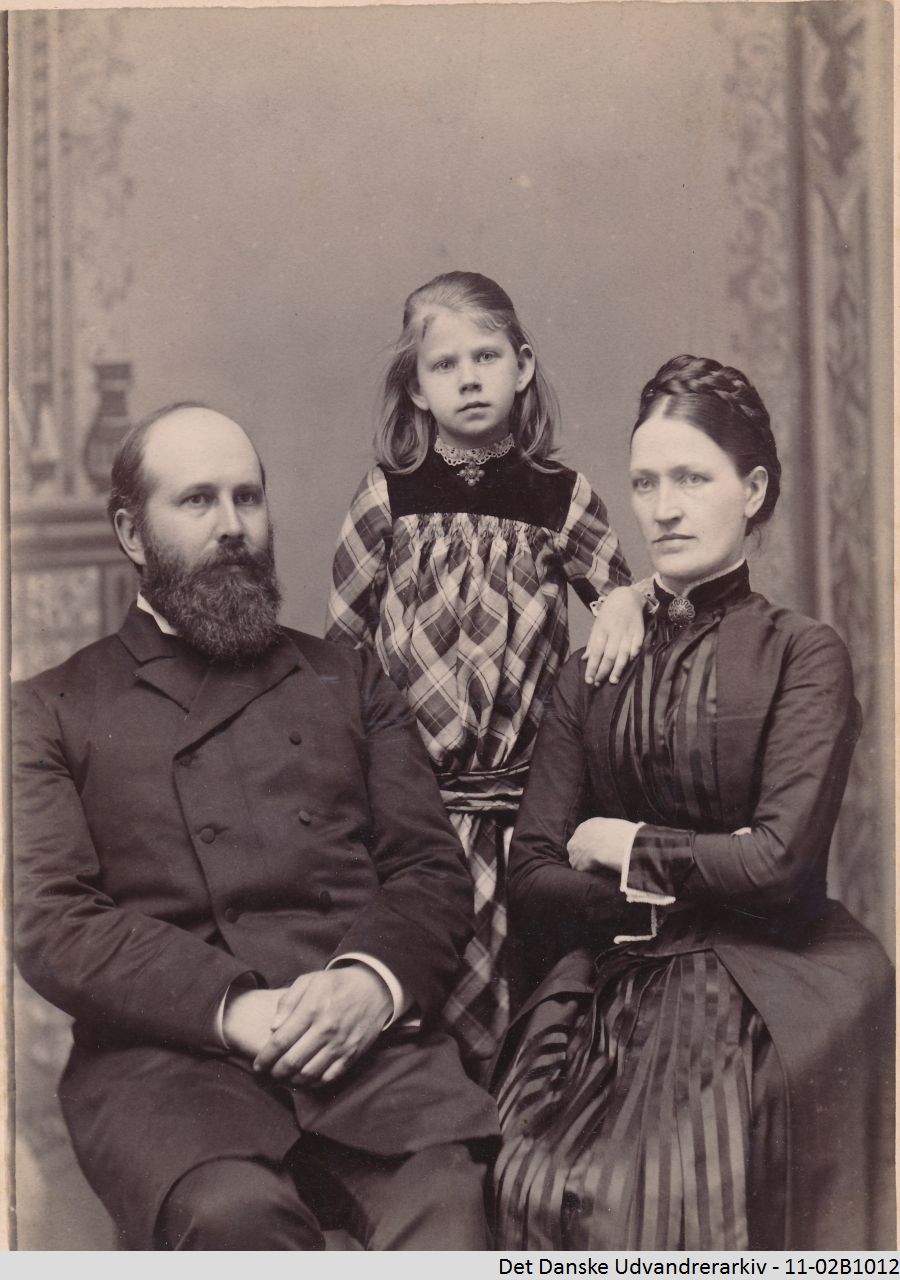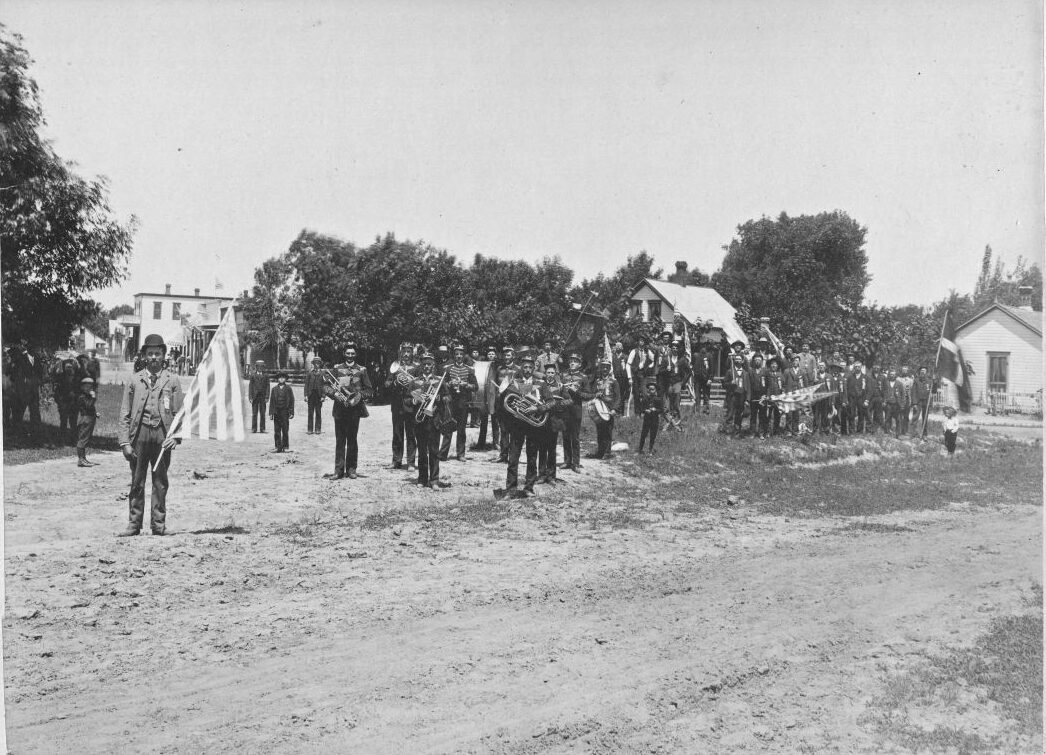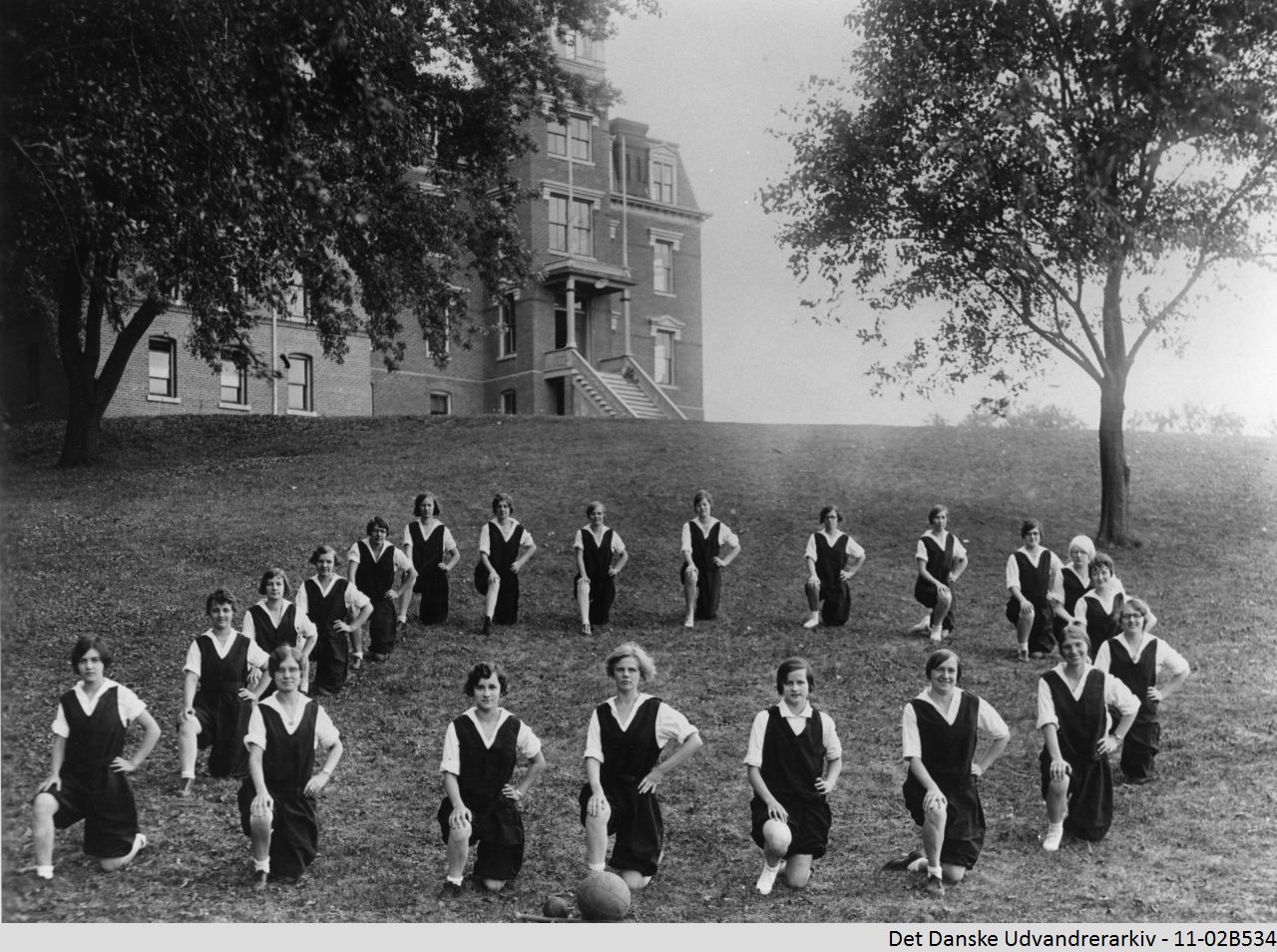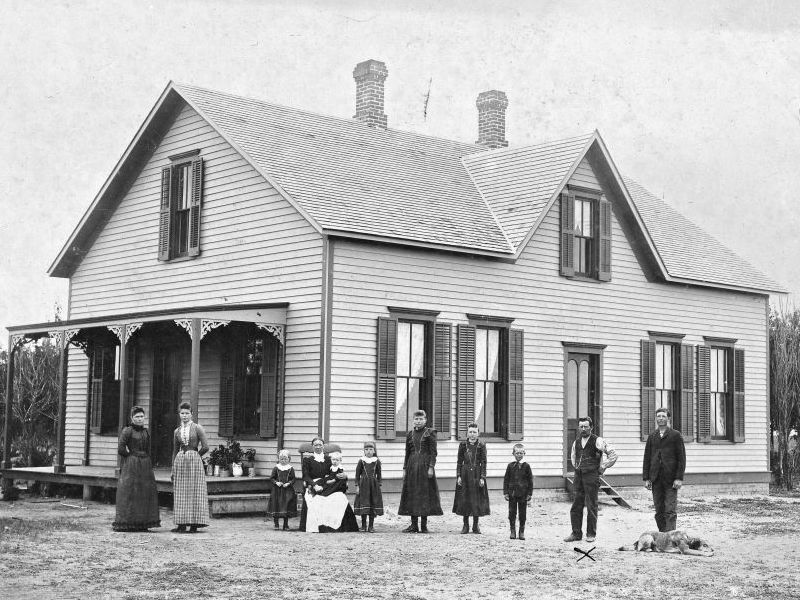From peasant to "farmer"...
“The distance separating the Danish peasant from the American farmer takes more than one lifetime to travel regardless of all other circumstances. Necessity demands the sacrifice of one generation. How many have not voluntarily set out across the Atlantic, eyes blindfolded, sailing towards their own annihilation, losing themselves as Danes and seeing their children, at best, become Americans, and disappearing into another class.”
[Johannes V. Jensen: Fra Graabølle til Chicago, 1909]
There are Homes in Jutland...
“…there are homes in Jutland, where now only the old sit left behind fumbling with letters from Minnesota and the pretty cabinet cards with white dresses, side-partings and children on the lap, small new faces carrying the familiar traits but with a new world in their eyes.”
[Johannes V. Jensen: Emigranten, 1909]
Christianity and being part of a religious community played an important role for many emigrants. Native Danish Churches like Indre Mission and the Grundtvigians also crossed the Atlantic. For many years they cooperated and constituted a common Danish Church in America
As years went by the strong national currents in Grundtvig’s ‘happy Danes’ became objectionable to the ‘Holy Danes’ in Indre Mission. The theological dissonances reached a climax in 1896, when the Danish Church was torn apart. Congregations sympathetic to Indre Mission united to form what would be known as the United Danish Evangelical Lutheran Church in America.
With Grundtvigianism the concept of Folk High School was introduced in America. Like its Danish counterpart the goal was to impregnate the younger generations with knowledge of national Danish heritage, language and history.
At the end of the 19th century several Folk High Schools were built, especially in the prairie states, where Danish emigrants flocked.
Among Danish emigrants Folk High Schools faced competition, especially from Indre Missions schools, which were less concerned with national heritage, focusing more on practical subjects.
Danish emigrants were often advised not to settle in the larger American cities, where living conditions for newcomers were poor. The Danish religious congregations in America were particularly engaged in helping Danish emigrants to find a better life in the country and among fellow countrymen.
At a church meeting in Clinton, Iowa in 1884, it was decided that the church should acquire 140 km2 of land on the southern outskirts of the town of Tyler in Minnesota. The objective was to found a Danish colony.
The new colony was named Danebod. After only a couple of years it housed almost 200 Danish owned farms.
Frederik Lange Grundtvig (1854-1903) was the youngest son of N.F.S Grundvig. He emigrated in 1881 to become head of the Danish congregation in the town of Clinton, Iowa. From this position he achieved a notable role in the Danish Church in America over the next decades.
Alongside his religious conviction Frederik Grundtvig carried a profound enthusiasm for Danish language and national heritage. As one of the founders of the emigrant organisation Danish People’s Society (1887) he wished to “preserve the Danish People” in America. The means by which the objective could be reached were by founding Folk High Schools and acquiring land in order to found colonies, allowing Danes to live together.
The initiatives of the Danish People’s Society were only supported by some of the Danish-American community. The more conservative Indre Mission had no desire to support Grundtvig’s amalgamation of Christianity and nationalism. Faced with failing support, Frederik Grundtvig returned to Denmark in 1900, where he died a few years later.
The New World did not have a social security system. Instead, churches often formed social organisations, ran schools and children’s homes and provided for the elderly. Members of the community could also receive financial support in the event of accidents.
Several national organisations existed alongside the religious communities, with the purpose of aiding members economically in case of illness, death or accidents, for example. Most important among these organisations was The Danish Brotherhood, founded in 1881 in Omaha, Nebraska by veterans from the Danish-Prussian war. The Brotherhood grew rapidly over the years with more than 300 chapters spread all over the North American continent.
Over the years the religious seminaries of the Danish-American congregations developed into regular American educational institutions.
Indre Missions’ Trinity Seminary in Blair, Nebraska gave birth to Dana College and Grundtvigians founded Grand View College in Des Moines, Iowa.
The Danish origin was important for both institutions but faded with the educational surge in the post war decades and the enrolment of still more Americans with other national backgrounds.
Det gamle Land saa underligt smaat ...
“When American farmers, that once emigrated from Denmark, meet with Danish farmers at the summer meeting in Rebild Bakker, the reunion can give them a lot to think about, the old country, so odd and small […] The sum of their experiences will have to be something like, that the poor conditions they left behind eventually became the reason for their progress in the new country, for without the frugal costumes they brought with them, they would never have become settlers. And looking back, they will wonder at one more thing: how close America and the old world have come over the lifetime that has passed, since they left…”
[Johannes V. Jensen: Dansk-Amerikaneren og den Danske Bonde, 1928]
Travelling through America in the 1890s, Danish Journalist Henrik Cavling paid a visit to the town of Dannebrog in Nebraska. He was invited to stay at the emigrant Peter Christensen’s house. Afterwards he reported:
“Upon entering the house of Peter Christensen I found nothing resembling the house of a Danish farmer. The house was made up of seven bright and spacious rooms equipped with light American furniture., lacking any peculiarities. It had no alcoves, storage benches or grandfather clock. No piece of furniture characterized the home as a farmer’s house. On the other hand, there was a wonderful Danish farmer’s wife and a bunch of fair-haired, red-cheeked boys and girls, taking their seats around the table looking at me with astonished blue eyes. I had come from the old land, that they had never seen but whose language they would still speak.”
A small ad in the Newspaper Dannevirke held an invitation for everyone interested in founding a new Danish colony in South Dakota. Interested parties were instructed to meet at the railway depot in St. Paul, Minnesota on the evening of 2nd October 1906.
Six persons showed up and boarded the train westward. By a twist of fate they ended up in Montana, but this did not stop them in their quest, and they founded the colony of Dagmar, named after a medieval Danish queen.
The initiative to build Dagmar derived from Emil F. Frederiksen who was a former Folk High School teacher and commemorated the event with the following words:
“In the western sun and wind
Dagmar, you will be founded in
the memory of a queen.”
Carl Rohl-Schmidt (1848-1900) was only 21 years old when he graduated from the Copenhagen Academy of Fine Arts. Despite his great ambitions he failed to make an artistic breakthrough. In 1886 he emigrated to America.
Once settled in America, Rohl-Schmidt soon gained a clientele among wealthy Americans. He specialized in sculptural and decorative artwork e.g. portrait busts and funeral monuments.
Rohl Schmidt’s considerable artistic success in America reached its climax when he was commissioned with the creation of the Sherman Monument next to the White House in Washington. Unfortunately, Rohl-Schmidt died suddenly during a stay in Denmark before the monument was completed. It was inaugurated in 1903 by President Theodore Roosevelt.



